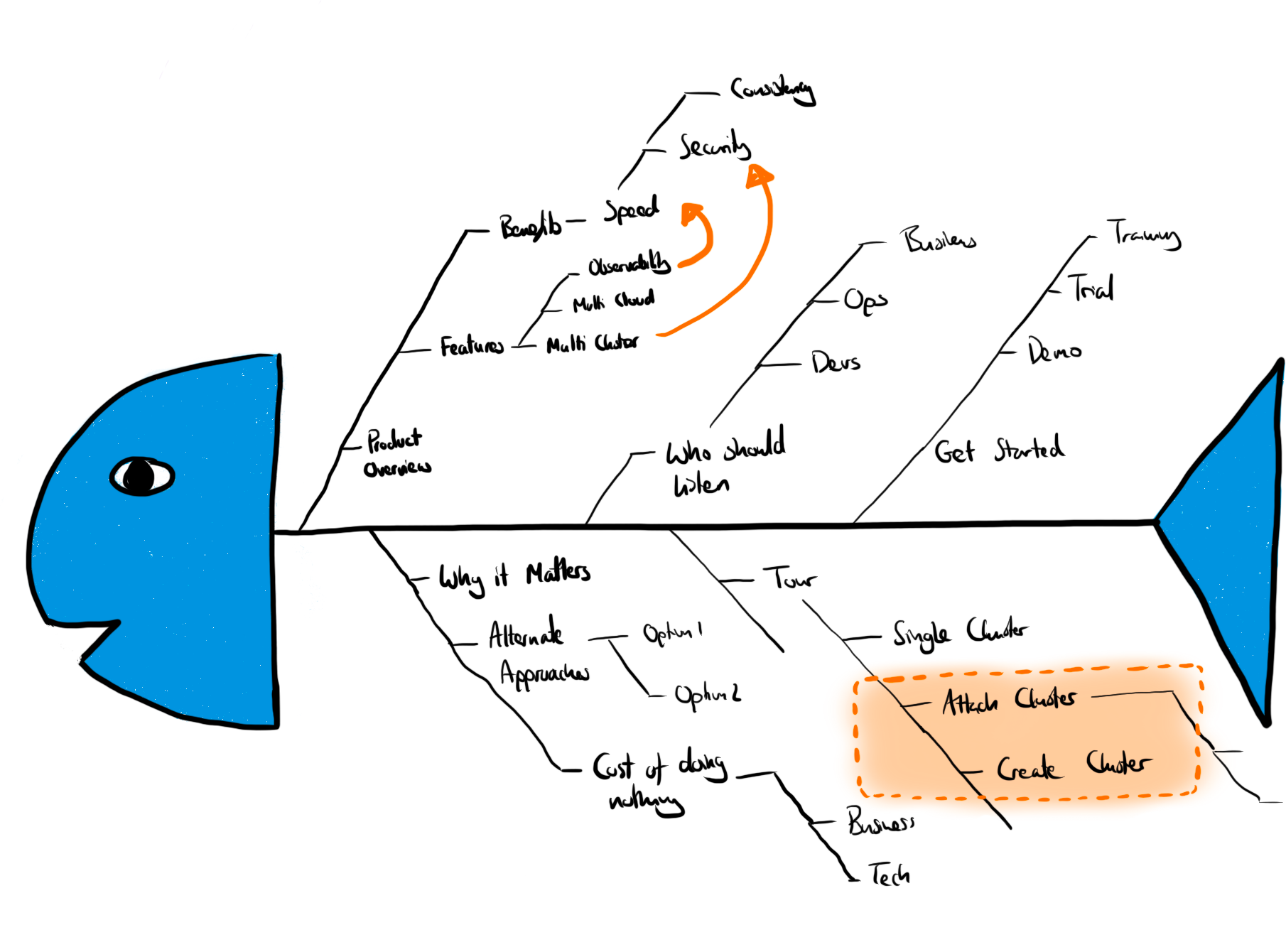As a child, I had a nasty experience involving pizza, anchovies and a small fishbone. I’ve never touched anchovies since and it has taken me a long time to get used to the idea of eating fish at all. But that’s not what I’m here to write about. I’m here to share a different experience of fish bones.
Recently I was preparing for a conversation with a customer where they’d asked to discuss a broad range of technologies. With these discussions, I’ve found that it is easy to get sucked into technical detail and lose sight of the main agenda. This is particularly true if the discussion involves a technical demo. I enjoy these types of discussion, but have been looking for ways to help keep things on track.
I stumbled across the idea of a fishbone diagram. Also known as the Ishikawa diagram, they are used to show potential causes of an event. For me they are the perfect tool for mapping out how I’d like some of these conversations to run.
- left to right along the spine is the flow of the conversation
- the ribs go into increasing technical detail as they move out from the spine

A rough sketch of a fishbone diagram
To avoid demos sounding pre-recored, it is important to keep the audience involved. This often means deviating from a planned talk track. When running a demo myself, I find it hard to field questions without losing my train of thought. This is even more challenging when using more than one demo environment. Knowing where I can go off-piste and what topics I can cover in each environment is important. Get things wrong and a technical demo can quickly unravel. Highlighting the fishbone diagram with the boundaries of demo environments has been helpful. This bounds the scope of an environment so that I can postpone questions if necessary.
For me, the fishbone diagram has been far more useful than bullet points or index cards. A quick glance gives me a feel for how how far through the agenda we are. I’m also free to allow myself to get sucked into the detail without losing sight of how to bring things back on track.
I’ve used the fishbone diagram a couple of times now and it will continue to evolve. If you have a different approach, or you want to know more about how I’m using these in real conversations, please get in touch.